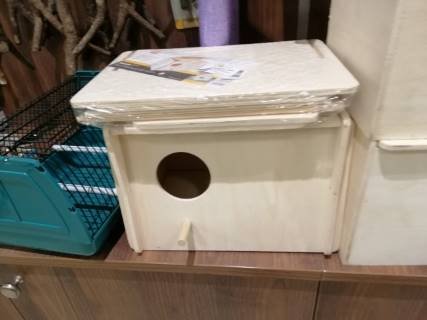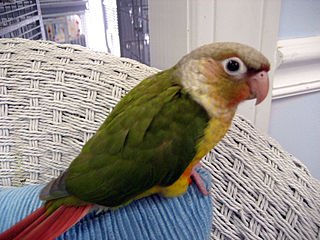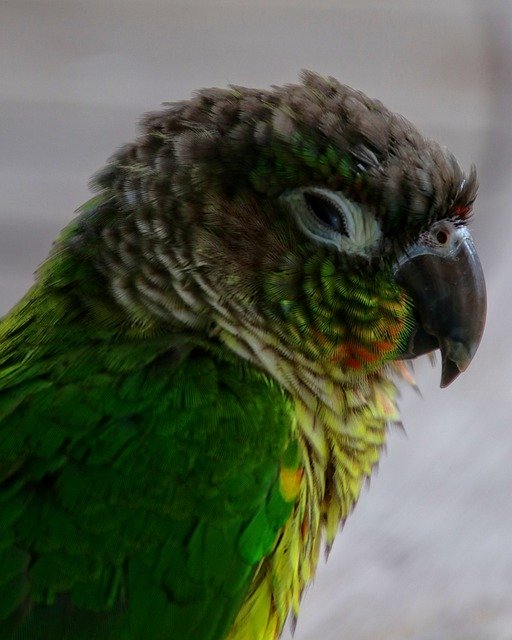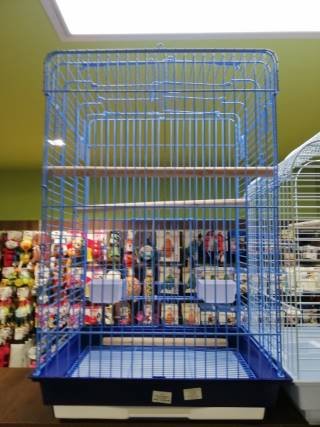Reasonably the favorites for the parrot lovers, Green Cheek Conures are praised as pets. Smaller in size but big in personality they win over the hearts of the whole family. Pretty colored feathers are only the outer part. However, their playfulness and outgoing character are what makes them irresistible. Inexpensive, compact, and calm they tend to be the apartment-friendly Parakeet solution.
For the new pet owners, regardless of what animal you keep, reproduction is quite a challenge. Parrots are known to be one of the high demanding species in this aspect. Although Green Cheek Conures are easy to breed because of their loving nature, you should prepare for the process to make it successful and enjoyable.

Breeding Timing
They usually start breeding around one to three years old. Before that, they are mainly sexually immature. Some may reach maturity earlier, but it’s not recommended taking them in the breeding process until at least a year old.
The season begins in summer. In the tropical areas they naturally inhabit, they are used to the warm weather. Even if you forgot it, these parrots would remind you through unusual behavior. Getting nippy, touching each other, or each other’s food, or females hiding in the box, are common signs of mating readiness.
Gender difference
Green Cheek Conures are not dimorphic, meaning we can’t tell the parrot’s gender visually while being 100% content. However, there are some tricks to help you distinguish their sex.
- Head shape- People usually say that the rounder head shape is more common for female Green Cheeks. The flatter the head is, the individual is more likely to be a male.
- Behavior- Males are usually very bold, compared to females.
- Feet color- One unusual method of gender determination is the feet color. Some researched the birds’ feet color and noticed a pattern where female ones have pink feet, while males have gray. All of the previously mentioned methods shouldn’t be taken for granted, as there may be many exceptions.
- Pelvic examination- Although again not completely accurate, it can give you the orientation. Gently press the pelvic bone area of your bird. If it splits- the bones would be rounder and wider- than it is more likely to be a girl. In the case of the sharper bones that seem to be closer together, it seems to be a male, since they were not passing the egg through it.
- DNA test- Only reliable gender determinators are medical checks, such as DNA tests. The examination can be carried out using the feather or blood. Moreover, they can be as cheap as $5.
Pairing couple
Before the mating, females, and males are kept separately. If paired with the same-sex companion they are usually calmer. After everything is set up for breeding, females are first placed in the cage. Upon updating, maybe 2 to 3 days later, a male is introduced.
Conures usually would not reject the partner, but their behavior should be followed for the first couple of days. Most of the breeders cross the same species. Hybridization is commonly avoided. However, the recent increase in this experimental breeding approach of Green Cheeks yielded a variety of parrot individuals of interesting colors and treats. On top of that, Conures would not mind the species when mating.
Nesting Box
The nesting box should be set in darkest areas, as it provides them a sense of privacy.
The bottom-line dimensions are 12 inches ×12 inches ×18 inches. The preferred size is 16 inches x 24 inches. They need space in this period, so make sure the box is spacious enough, but do not make it large as a cage since that would make them uncomfortable.
In the warmer periods, the nest should be prevented from heat. The breeding performance is affected if they are exposed to too much of the heat. Keeping the nest away from the roof is beneficial in the warm season. Make a lid. It would keep them away from light, as the darkness stimulates the process.
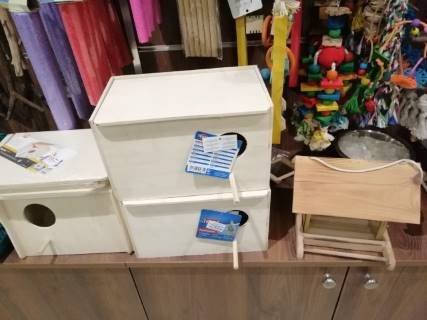
That way the nest could stay cooler as well. The lid should be removable though, as you may want to watch for hygiene during the process. Inspections should be conducted only if necessary. They don’t tolerate it. Wait until both of the parents are out so you can avoid aggression of prenatal instincts.
Favorable inside dimensions are 6 and 8 inches, with the whole being 3 inches in diameter. Well-chosen wood shavings, dried grass, sawdust are just some of the materials you can use for the nest. Conures have a habit of removing all the linings, living the eggs on the bare wood. Anyway, try finding suitable material for their natural cushions, as comfort in this period aids the whole process.
One important thing to keep in mind is that these are the recommendations based on the overall experience of the keepers. However, preferences depend on each individual bird. If they reject the shelter you prepared, experiment with size and material to find a suitable option.
Breeding cage
To suit such a high energy level, the breeding cage should be 4 feet x 4 feet x 2 feet. Then they can play, exercise, and bath as much as they need. Putting the nest box inside the cage, if it is large enough, maximizes the convenience for both the bird and the owner.
Conditions
An increasingly sensitive parrot requires strict conditions. The hormones are going wild, while the health should stay on point. Making diet nutritious is a must-do. Think of healthy options, with varieties of fruit, seeds, home-made food, and vegetables. Ingredients rich in calcium should be increased during the mating season.
Female Green Cheek Conures are prone to Egg Binding, a fetal condition manifesting as the inability to pass an egg. It may be prevented by feeding them calcium-rich foods, such as dark green, leafy vegetables, and regular supplementation. You don’t want them to gain weight, so keep an eye on the portions.
As playful as Green Cheek Conures are, they need to play and bath daily to maintain their health. You can place some freshwater and toys in the cage, so they have them at disposal.
Green Cheek Conure Eggs
On average they produce the clutch of 4 to 6 eggs. The incubation period lasts sometime between 22 and 26 days, although the 24th day is typical. Green Cheek Conures opt for modern-day parenting. Both of the parents sit on the eggs during these times. They usually have three to four prolific clutches each year.
Green Cheek Conure Baby Care
After hatching, the young are pink in color. They are often described to look like ‘’the pile of ten coins’’. They need to be feed on their mother’s milk for the first 24 hours. After 3 days, babies double in size if they are fed properly.
For the owners, staying out of the hatching process as much as possible is highly recommended, not to irritate the parents. However, sounds can tell you a lot if you listen carefully. If the newly born cheeks are crying, you can notice they are hungry. The interruption of it means the feeding is on the schedule and the baby will calm down afterward. Only if they are crying for long uninterrupted period it means you should go and check how are they doing.
At around four weeks happens a fun phase. The feather colors become obvious, as we can watch for their colors and characteristics.
To ensure they are growing well, content, and happy, feeding is the most important. They need a South American pellet along with veggies and fruits to intake all the nutrients. Combine spinach and broccoli, apples, beans, carrots, and corn.
More about baby care here:
https://parrotquaker.com/green-cheek-conure-baby-care/
Sum up
Green Cheeks are easy to bread once you are familiar with the conditions they need. Spotting your parrot being ready to go to this stage, you should prepare the setting. They need a deeper breeding box. Just as teenagers whose hormones are on the peak, they highly value their privacy and space. With birds, fortunately, only physical space is needed. The dark wooden box on optimal temperature and a specious cage is the requirement. There are some recommended measures, but birds may reject standards, as they have their own preferences.
Getting to know them before getting into mating process would ease your time. The procedure for breeding slightly depends on gender, so that’s what you should figure out straight away. Meeting their nature, you can understand their behavior and sensitive needs in the reproductive season.
After hatching, taking care of the little ones is a challenge. Their development depends mostly on proper eating habits. Watch out for what you feed them.
Regularly social, seeking, and evoking attention all the time, in the mating season they would prefer to be more alone. They get nippy or aggressive. Although it reminds of adolescence, it’s much easier to handle. Listen to the needs of your Green Cheeks and you will for sure enjoy this stage in their development as well.

